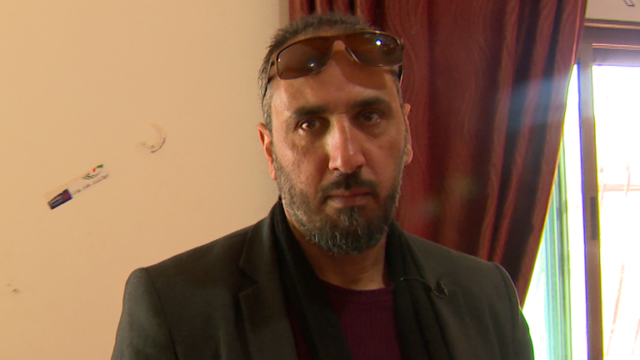In a smoke-filled room in Bethlehem, four men pore over a (newly released) list of the names of Palestinian detainees who will be released in the first phase of the ceasefire agreement.
This is the office of the Palestinian Prisoners Society. The phone hasn’t stopped ringing. Families are desperate for news.
Some 735 names appear on the list: 328 of them have been sentenced to one or more life sentences, 74 have not faced charges and 49 are under “administrative detention”, meaning they have been detained for an indeterminate period of time. no charges.
Latest Gaza: There will be no ceasefire without a list of hostages to be released, Netanyahu warns
A room here is packed from floor to ceiling with files.
“Since 1967, the Israeli occupation has detained 1.2 million Palestinians,” says Abdullah Zaghari, director of the organization.
Now, he says, 10,400 Palestinians – from the West Bank and East Jerusalem – are in Israeli prisons.
However, the number of people who have been removed from Gaza since October 7 is unknown.
“This is the biggest challenge for us,” says Zaghari.
“We have received calls from families in Gaza since the beginning of the war, they have no confirmation about who has been arrested. Maybe some, maybe they have been murdered. Maybe they are in secret prisons.”
He claims that prison conditions have worsened since October 7, as “revenge” for Hamas attacks.
Read more: Timeline of events since the October 7 attacks
“Hundreds of people in prisons suffer from hunger, diseases, they cannot shower… the majority of prisoners in prisons lose more than 40 kilos of body weight,” he says.
Before October 7, the largest prisoner handover occurred following the release of Israeli soldier Gilad Shalit in 2011. He was kidnapped in a cross-border tunnel raid and held by Hamas for five years.
More than 1,000 Palestinians were freed in the prisoner exchange, but among them, after 22 years in prison, was Yahya Sinwar. He became a leader of Hamas in Gaza and is widely considered the architect of October 7, eventually assassinated by the Israeli army in Tal as-Sultan, in Rafah, last October.
On the other side of Bethlehem, sitting together on a terrace in the shade of a tree, we meet a family of three generations who have spent time in Israeli prisons. Grandfather, son and, now missing, his eldest son.
It was two in the morning. Firas Hassan, 50, tells me that his 16-year-old son Ahmed was dragged out of his bed. He had criticized the Israeli occupation on Facebook. That was last September. Firas fears for his son in the Ktzi’ot prison in southern Israel.
He knows very well what prison is like. He has spent 15 years in and out of various Israeli prisons. He was last released in April 2024, after two years, this time without charges.
He was arrested in a management position, he was sitting in his car, on his way to university to study for his master’s degree.
Listen to The World with Richard Engel and Yalda Hakim on your podcast app
When he was young, he had been a member of the political wing of Palestinian Islamic Jihad, he told me, but nothing more.
“I was in prison several times for a long time because of my opposition to the occupation. The situation in prison is very difficult, especially after October 7. Before October 7 the situation was stable, after that everything turned upside down, it was horrible, crazy, scary: the beatings, the hunger and the decrease in the amount of food compared to before October 7.”
Firas says that he was beaten on his last day in prison and shows us a photograph: with his face swollen and bruised.
Now he wants his son at home. His hope: that the ceasefire lasts long enough for his firstborn to return to his family.
Israel says its arrests and detentions comply with international law and the Israel Prison Service denies all allegations of abuse.
Additional information from producer Nick Stylianou







